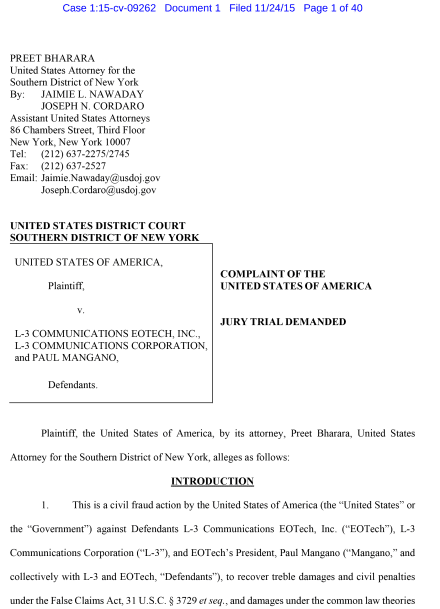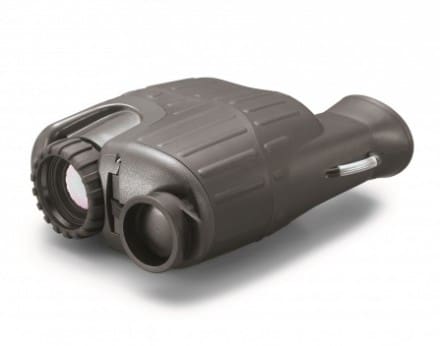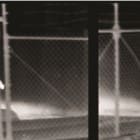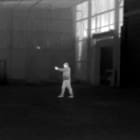As most of you know by now, the US Government sued L-3 Communications and its subsidiary EOTech as well as EOTech’s CEO, Paul Mangano for fraud regarding issues with their Holographic Weapon Sights which have been purchased by the Departments of Defense, Homeland Security, and Justice. While we have provided a copy of the case, many won’t take the time to actually read it so we’ve extracted some of the pertinent information for you. What the Government’s attorneys have done is demonstrated a pattern of fraudulent behavior on the part of L-3 on how the sights work in various environments. In particular, they’ve named EOTech CEO Paul Mangano due to his part in the scheme.
This is a civil fraud action by the United States of America (the “United States” or the “Government”) against Defendants L-3 Communications EOTech, Inc. (“EOTech”), L-3 Communications Corporation (“L-3”), and EOTech’s President, Paul Mangano (“Mangano,” and collectively with L-3 and EOTech, “Defendants”), to recover treble damages and civil penalties under the False Claims Act, 31 U.S.C. § 3729 et seq., and damages under the common law theories of mistake of fact and unjust enrichment, arising from a scheme to defraud the United States Department of Defense (“DoD”), the Department of Homeland Security (“DHS”) and the Federal Bureau of Investigation (“FBI”) in connection with EOTech’s knowing sale of defective holographic weapon sights (also referred to herein as “combat optical sights” or “sights” and sometimes abbreviated “HWS”).
The suit shows that EOTech knew about issues as far back as 2006 and failed to alert the Government. Rather, the Government had to discover the issues on their own.
Since at least 2006, Defendants knew about defects in their weapons sights that caused product failures, particularly in the extreme environmental conditions in which Special Forces operate. Instead of making a prompt disclosure of the defects, Defendants delayed disclosure for years, until they believed they had a fix or were compelled to make a disclosure because of employee or other complaints.
By 2006, Defendants knew that the sights failed to perform as represented in temperature extremes. Specifically, they learned that the sights experienced a condition referred to as “thermal drift,” meaning that the sight’s point of aim differed from its point of impact (or “failed to hold zero”) when subjected to hot or cold temperature. Although EOTech was contractually required to disclose any information concerning the reliability of the sights, EOTech waited nearly a decade to disclose the defect. In more recent years, as EOTech subjected new models of the sights to qualification testing, the test engineer documented thermal drift in every sight tested in report after report. Finally, in March of 2015, the FBI independently discovered the thermal drift defect and presented EOTech with the very same findings that the company had documented internally for years. Shortly thereafter, EOTech finally disclosed the thermal drift defect to DoD.
By early 2007, Defendants knew of a separate performance failure in cold temperature. Beginning around 32 degrees Fahrenheit, the sights’ aiming dot became significantly distorted, affecting the accuracy of the sight and worsening as the temperature approached -40 degrees. At sub-zero temperatures, the distortion of the aiming dot affected the accuracy of the sights by more than 20 inches for every 100 yards. EOTech delayed disclosing the defect for more than a year, and until it had a fix in place. Even then, EOTech presented its fix to DoD as an upgrade to a quality product that already conformed to specifications.
By 2008, Defendants also knew that their sights failed to perform as represented in humid environments. Defendants knew that the sights leaked, allowing moisture to enter and causing a degradation of the reticle (i.e., the circle and aiming dot in the sight necessary for acquiring a target). Although the sights were always sensitive to humidity, in 2008 EOTech inspected a large shipment of returns from DoD and noticed damage caused by moisture in nearly every sight. In the years that followed, moisture-related complaints (typically dimming or disappearing reticles) became the number one reason for EOTech’s customer returns, and EOTech’s own testing repeatedly confirmed that the sights were not properly sealed and quickly degraded when exposed to moisture.
Defendants, however, waited to disclose the problem until 2013, when, once again, they believed they had arrived at a solution. And again, EOTech pitched its fix as an upgrade to a
quality product that conformed to specifications.
Once again, EOTech never disclosed these issues to the Government. Instead, internal testing at the FBI brought them to light.
Finally, in March 2015, the FBI discovered what EOTech had known for years. In conducting its own testing of the sights for zero stability, the FBI exposed the sights to normal temperature variations for the state of Virginia, a temperature range much narrower than -40 to 140 degrees Fahrenheit. A ballistics team then tested the sights for point of aim/point of impact accuracy, or zero stability, and similarly found significant drift at both higher and lower temperatures.
After discovering the problem in March 2015, the FBI immediately presented its findings to EOTech. Shortly thereafter, EOTech disclosed the issue to Crane, but stated that the problem was only recently discovered and that it was devoting substantial efforts toward finding a solution.
When asked about the company’s previous efforts at finding a solution for thermal drift, a former EOTech optics engineer explained that the company knew for years that thermal drift was an inherent design flaw with the “Generation II” model of the product that was specially designed for military use, and that no fix existed without substantial modification of the product.
Many have wondered why CEO Paul Mangano was specifically named. The key is in this passage from the suit:
Both Mangano and EOTech’s contracting officer acknowledged that EOTech was contractually obligated to notify Crane if the sights deviated from the contractual specifications. Mangano also testified that L-3’s ethics policy requires disclosure of quality issues to the Government.
And this:
The decision maker on disclosure of quality-related defects was Mangano. As the Co-founder testified, until a solution was in place, Mangano “did not want this [defect] disclosed to the marketplace at all and he specifically communicated that.” According to two EOTech employees, the Co-founder fought repeatedly with Mangano over whether to disclose the distortion defect, with the Co-founder supporting immediate disclosure and Mangano opposing it. Moreover, Mangano admitted at a deposition that the decision to disclose a quality issue to a customer ultimately was his.
Mangano’s decision to hide defects goes back to at least 2007.
By email dated September 16, 2007, Mangano reported to other senior managers that “[t]he take-away from this past Friday’s Red Review is that we will not be in a position to fully disclose to Crane and Colt/Canada [a Canadian EOTech customer] until November at the earliest.” Mangano added that “[w]e will only disclose to Crane and Colt/Canada. Given that we have no product returns over the years from other military customers reporting the issue, we see no need to communicate the patent defect.”
Internally at EOTech, employees knew this course of action was wrong. This statement may be the most damning of all.
Shortly thereafter, a sales and marketing employee wrote to the Co-founder “in confidence” about Mangano’s email, stating, “I have an issue with this . . . Is it worth risking one person’s life on this? What if there is a guy in the mountains in Afghanistan, and he brings up his sight picture on the enemy who has the drop on him with an AK[?] He takes aim as quickly as possible and puts a shot that misses wide due to the distortion of the reticle. He’s dead a fraction of a second later from a 7.62 mm round. This is a dramatic example, but this is the risk that is posed the longer the end-user is unaware of the risk.”
The sales and marketing employee added that “[w]e have been sitting on this issue for a long time and it makes me very uncomfortable that we have still done nothing about this to protect soldiers and LEOs [law enforcement officers] of both this country and those across the globe from getting killed. What if it has happened already?
Another issue that comes up in the suit is that Naval Surface Warfare Center Crane, which acts as Program Manager for Special Operations Forces Weapons on behalf of USSOCOM needs to institute a more robust testing and quality control regimen. I believe that they relied too heavily on the vendor (L-3 Communications) to self monitor for adhering to specifications. While this may have made sense early in the war, in order to quickly field equipment to troops in the field, there has been plenty of time to allow acquisition best practices to become the norm. Additionally, if EOTech is an ISO certified company, someone needs to conduct a thorough audit.
While L-3 Communications was quick to settle the suit with a $25.6 Million fine, we wait to see if the Government will recommend debarment for L-3 Communications, just EOTech, or not at all. Additionally, there are several other user groups not represented in this suit, such as State and Local government agencies, domestic consumers and international customers.
We have extracted some of the most significant sections of the suit, but we still encourage you to read the entire filing which is available here.






















































































































